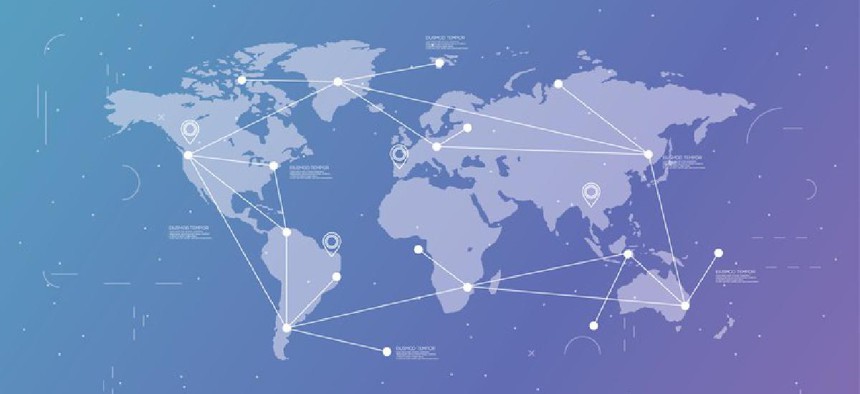Globally connected data can safeguard the defense industrial and technology base

Data can play a critical role in planning and ultimately protecting the nation's valuable talent, resources and supplies.

Over the past two decades, U.S. businesses have become global enterprises, creating interconnectivity and reliance on foreign partners, suppliers and governments. While the nation has benefitted from the virtues of globalization, it now faces with a number of complex challenges:
- As a result of the pandemic, the U.S. is suffering from a shortage of items such as semiconductors, which is slowing the production of cars and electronic devices.
- The nation's innovation edge is slipping away.
- The number and sophistication of cyberthreats and attacks is growing.
On June 7, President Joe Biden announced the formation of the Supply Chain Disruptions Task Force to address supply chain vulnerabilities. As the administration formalizes its strategies for six industrial bases that underpin America's economic and national security, it is essential that the task force, in partnership with the administration, considers how data can play a critical role in planning and ultimately protecting the nation's valuable talent, resources and supply.
Creating transparency in an opaque environment
Those responsible for protecting the global defense industrial and technology base (DITB) must uncover, isolate, monitor and remediate the chronically opaque problem of risk, specifically foreign influence. For example, in a recent study conducted by Dun & Bradstreet, analytics experts found that approximately 26% of U.S.-based lithium-ion battery suppliers had foreign-owned suppliers in their supply chain. This includes suppliers to U.S. government contractors. A similar picture emerges with semiconductors, the majority of which are produced in Asia.
Below are four ways the government can use data to create greater transparency and manage risk across the DITB:
1. Use trusted sources of data. Ensure data is globally comprehensive, updated
regularly and adheres to privacy regulations. For example, agencies should leverage a combination of trusted first- and third-party data to validate suppliers are financially healthy, and tap into the data to discover further linkages and hierarchies. In addition, they should require that supply chain analysis not rely on self-certification by vendors and contractors.
Having access to global, robust and real-time business data, analytics and signals during the source selection and due diligence process will allow the government to gain further transparency into partners' and suppliers' activity to ensure that they are doing business with worthy and upstanding parties.
2. Identify points of origination and business lineages. The opacity of business relationships in supply chain networks can disguise risk, which can threaten Department of Defense programs that operate on a global scale. These global business relationships, ownership information and foreign activities are complex, and the constant evolution of the commercial business environment makes supply networks extremely fluid. Therefore, when evaluating suppliers across the DITB, it is essential that the government leverage trusted data sources to consider:
- Is a small business truly a small business or connected to a larger corporate family?
- Is there direct, legal foreign ownership?
- Are numerous firms within the DOD supply chain linked to the same global ultimate parent? If so, are they all active or inactive businesses?
3. Create a resilient supply chain. Recent product shortages illuminate the need for the U.S. to create a more agile supply chain that can quickly anticipate, adjust and respond to unexpected events. While short-term shortages are hard to overcome, it is essential that government leaders consider longer-term strategies to diversify their suppliers across regions, focusing on building talent and operations first in the U.S. and then extending the reach of suppliers to a diverse number of geographic locations to create increased agility to weather any unexpected event.
4. Create a robust risk mitigation monitoring system. In an ever-changing threat environment, DOD must stay steps ahead to detect, protect, pivot and continue operations with as minimal impact as possible. To do so, defense agencies must use the latest artificial intelligence and automation technologies to create an integrated solution that uses near real-time data and analytics to look beyond the surface to monitor the business activity of tier 1 and all sub-tier networks to identify risks of any type -- from cyberthreats and network vulnerability, to business closures and inactivity that could impact supply chain productivity. Agencies can then take immediate action to remedy a situation if needed.
It is time to take immediate action, as transformative investments in data and risk management technology today will create a more resilient and agile supply chain tomorrow – ultimately strengthening domestic competitiveness and ensuring the longevity and vibrancy of America's economy.





